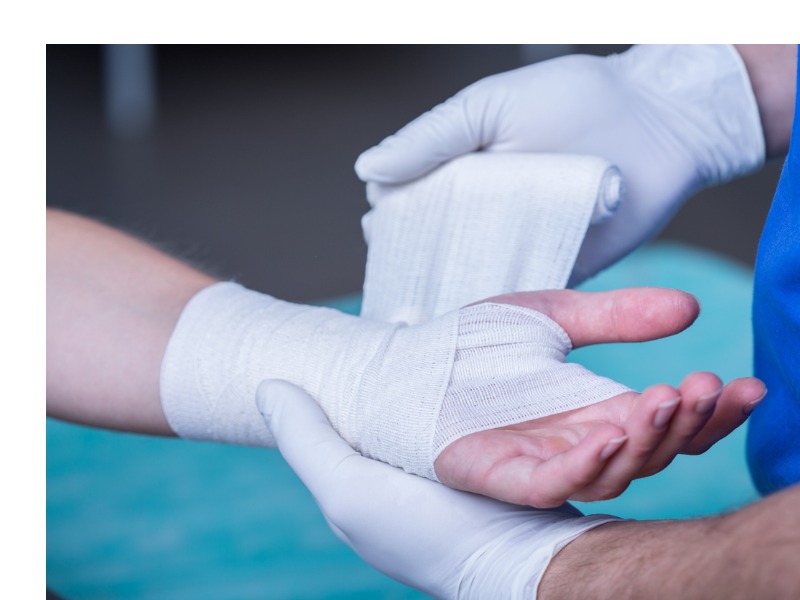How to Deal With Hydraulic Injection Injury?
A hydraulic injection injury is an extremely serious injury that can lead to extreme tissue damage and in some cases, a loss of limb. It usually happens when an employee repairing a hydraulic system suddenly experiences a searing stinging pain, they pull back the gloves and see a little puncture hole that doesn’t seem to be hurting. But with time, the wound swells and starts causing severe pain.
If the issue gets more serious and the first-aid treatments prove to be inefficient, the workers experiencing this injury will find themselves in the hospital. In many cases, people who have suffered from a severe hydraulic injection injury might have to go into surgery.
In this guide, we will explain the best way one can deal with a hydraulic oil injection injury.
A hydraulic injection injury, also known as a hydraulic fluid injection injury, is a serious medical condition that occurs when high-pressure hydraulic fluid is forcefully injected into a person’s body. In such incidents, there is a 16% to 48% chance that the person injured would have to go through amputation. Hydraulic fluid is commonly used in hydraulic systems, such as those found in heavy machinery, construction equipment, and industrial tools.
These injuries typically happen when there is a breach or rupture in a hydraulic system, and the pressurized hydraulic fluid is accidentally injected into a person’s skin or underlying tissues. The hydraulic fluid is usually under extreme pressure, often exceeding 1,000 psi (pounds per square inch), which allows it to penetrate the skin and underlying tissues with great force. The impact of hydraulic fluid on skin is potentially harmful.
Annual Incidence
| Region | Approximate Annual Incidents |
| North America | 600 |
| Global | Likely higher, but underreported |
Hydraulic oil injection injury can be extremely dangerous and may not appear as severe initially due to the small entry wound. The injected fluid can cause extensive damage to the affected tissues and blood vessels. However, the hydraulic injection symptoms for injuries include;
- Swelling & pain at the injection site
- Skin discoloration & blistering
- Tissue necrosis (death of tissue)
- Infection
- Nerve damage
- Damage to muscles and tendons
- Loss of function in the affected body part
- The potential amputation in severe cases
- Systemic effects if the hydraulic fluid contains toxic substances
Injury from a hydraulic fluid injection is a major medical emergency that has to be attended to right away. Bear in mind that any delay in the treatment can have serious consequences. Several studies make it clear that “an infected person must need an immediate surgical intervention.”
Here are the actions you should take if you or any of your colleagues dealing with such a wound:Severity and Amputation Rates
| Injection Pressure (PSI) | Amputation Rate |
| 7000+ | Approaches 100% |
| Lower Pressures | Varies, but significantly lower |
Call 911 for Emergency
Call your local emergency number or 911 right away. Hydraulic fluid injection injuries must be treated quickly, and professional medical assistance is crucial.
It’s better to Control Bleeding
If there is any bleeding from the wound, apply gentle pressure with a clean, sterile cloth or bandage. Do not use a tourniquet unless directed by medical professionals.
Never Try To Remove Fluid
Do not try to remove the hydraulic fluid from the wound. It may be tempting to do so, but it can cause more damage by pushing the fluid deeper into the tissues. Instead, leave it in place and let medical professionals handle the extraction.
Avoid To Give Food or Drink
Avoid giving the injured person anything to eat or drink, as they may need surgery, and anesthesia could be necessary.
Apply a Cold Pack or Ice
You can also apply a cold pack or ice to the infected area. It helps to minimize the swelling and pain for a short period of time.
Must Follow Medical Guidelines
Once the injured person receives medical attention, follow the advice and treatment recommendations provided by healthcare professionals. This may include surgery to remove contaminated tissue, wound care, antibiotics, and rehabilitation.
Keep the Person Calm
Maintain the injured person’s body temperature by covering them with a blanket or clothing to prevent hypothermia. However, it is crucial to keep the injured person as calm and still as possible. Movement can worsen the injury and increase the spread of hydraulic fluid within the body.
Insist For a CT scan
Identifying the hydraulic oil injection injury with a simple and straightforward physical examination is not possible. You must demand for a CT scan, otherwise, at least suggest they conduct an X-ray. However, the X-ray doesn’t give an accurate result, but it will detect trauma that is overlooked by a physical examination.
Common Sources of Injuries
| High-Pressure Grease Guns/Systems | 57% |
| Paint, Hydraulic Oil, Similar Fluids | 18% |
| Diesel Fuel Injectors | 14% |
There are lots of precautionary measures that should be considered to prevent hydraulic injection injuries. Some of them are mentioned below;
Must Use Of Safety Equipment
Instruct the workers to Personal Protective Equipment. It is your responsibility to give them safety goggles, gloves, protective clothing, and other products while working with hydraulic systems. You can also use safety shields and guards on hydraulic components to minimize exposure to high-pressure areas.
Use of Less Toxic Hydraulic Fluids
Make use of hydraulic fluids that are less harmful when in touch with skin or other body tissues. Be aware of the specific properties and risks associated with the hydraulic fluid being used and follow appropriate safety measures.
Give OSHA Training
Make sure that everyone who works with hydraulic systems has adequate OSHA training and is educated on safe procedures, particularly the risks associated with hydraulic injection injuries. You can enroll your teams into the online hydraulic safety certification course to teach them how to mitigate this hazard. Teach employees how to properly use and maintain hydraulic equipment and instruct them on how to spot possible hazards as quickly as possible.
Inspect Hydraulic Equipment Regularly
Establish a regular maintenance program for your hydraulic equipment to make sure all of the parts are functioning properly. Keep an eye out for indicators of wear, damage, and leaks in the hoses, fittings, and connections, and replace any that are damaged right away.
Must-Have an Emergency Response Plan
You must have a backend plan to communicate an emergency situation. You have to create or even divide the plan, so every individual knows what act needs to be done when the event of hydraulic injection injury happens. Make sure all the employees are aware of your plan.
Implement Reporting Techniques
Encourage employees to immediately report any events, incidents of near-miss or equipment problems. Analyze these reports to find the causes of the problem and take action to fix it.
Keep in mind that hydraulic injection injuries can happen in just a few seconds with severe consequences. When working with hydraulic systems, it is crucial to prioritize safety, education, and implementation of preventive measures to lower the probability of these accidents and provide a safer working environment.
If you want to protect yourself from hazards like Hydraulic injection injury, you need to register in OSHA training courses that teach you how to protect yourself at a worksite.










